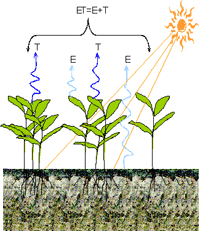Agricultural Research Division of IANR

West Central Research and Extension Center, North Platte
Date of this Version
12-2008
Abstract
The ecological benefits of a roadside native perennial grass stand are compromised when invasive species become established. We evaluated the potential to regenerate existing native perennial grass stands populated with yellow starthistle (Centaurea solstitialis) on a roadside planting in the lowland hills of the interior Coast Range of northern California. The experiment was designed to determine the effects of mowing, burning, or herbicide spraying, alone and in combination, on the vegetative cover and density of native perennial grasses and C. solstitialis. The study site contained blue wildrye (Elymus glaucus) and purple needlegrass (Nassella pulchra) as well as C. solstitialis. Burn, herbicide, and mow treatments were applied in spring 2004. After one year, C. solstitialis cover was less than 2% in all treatments that included spraying and in two years, C. solstitialis was 2% or less in all treatments except burned plots (8%) and control plots (16%). By the end of two years, percent cover and activity (i.e., growth and dormancy) of native perennial grasses were significantly greater for management treatments that included at least two of the tested vegetation control techniques. This study suggests that a combination of vegetation control techniques is necessary to nearly eliminate C. solstitialis and increase late summer cover and activity of native perennial grasses.


Comments
Published in Ecological Restoration 26:4 (December 2008), pp. 357-364. Copyright 2008 by the Board of Regents of the University of Wisconsin System.